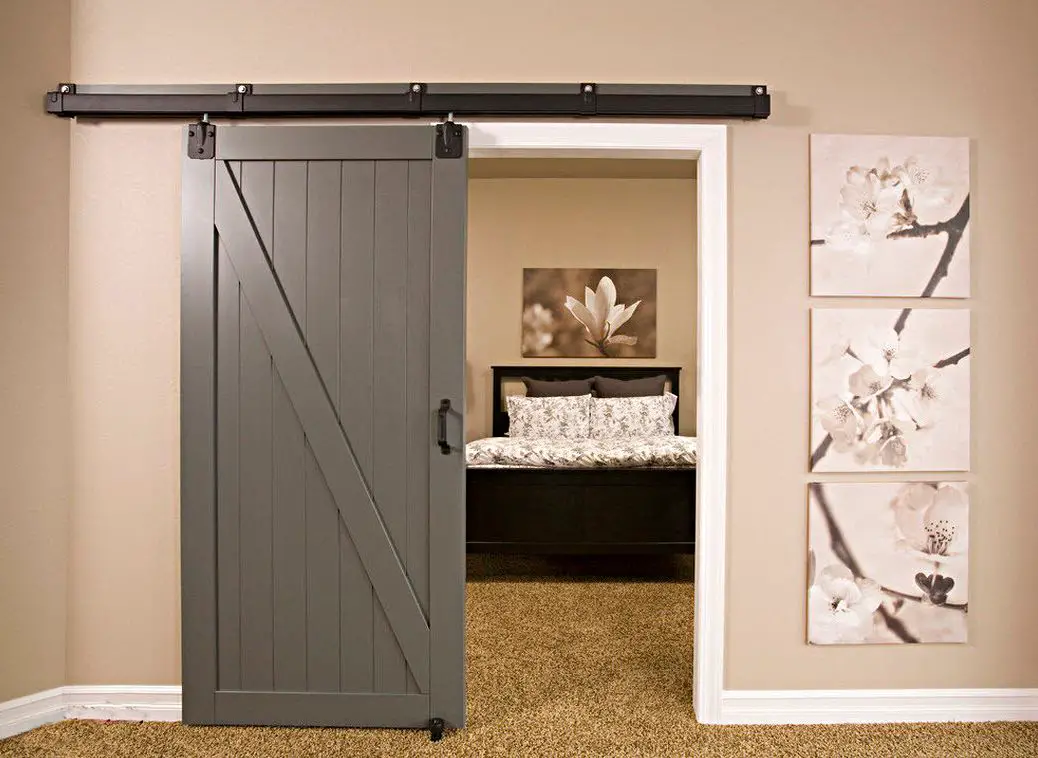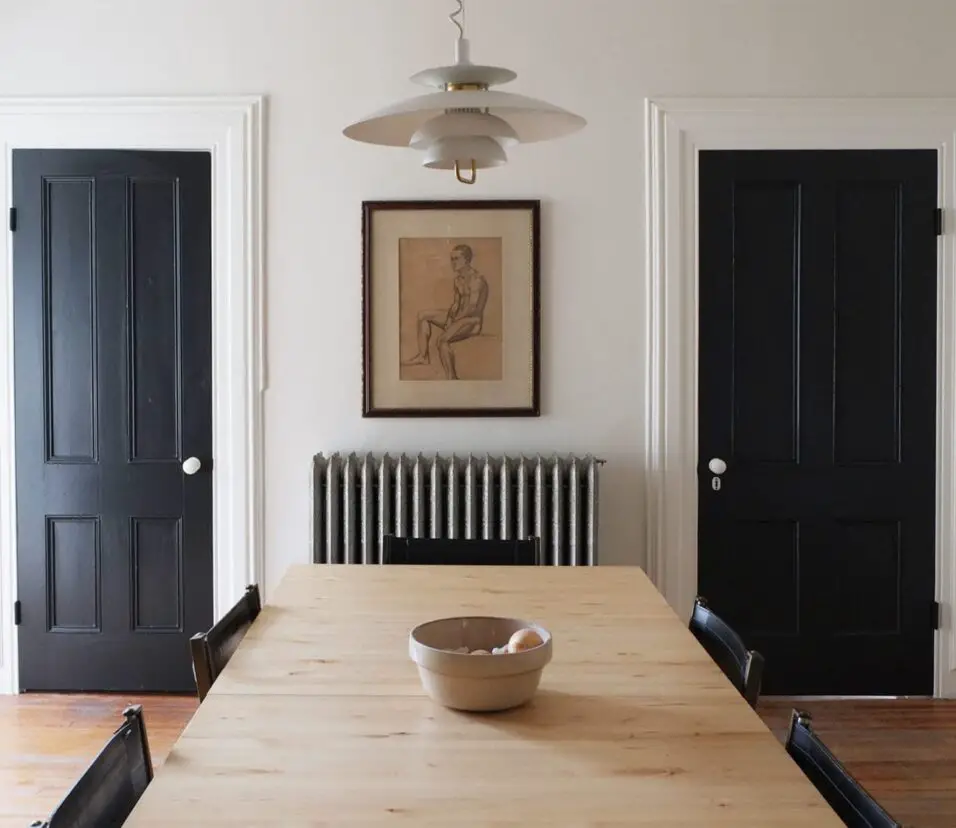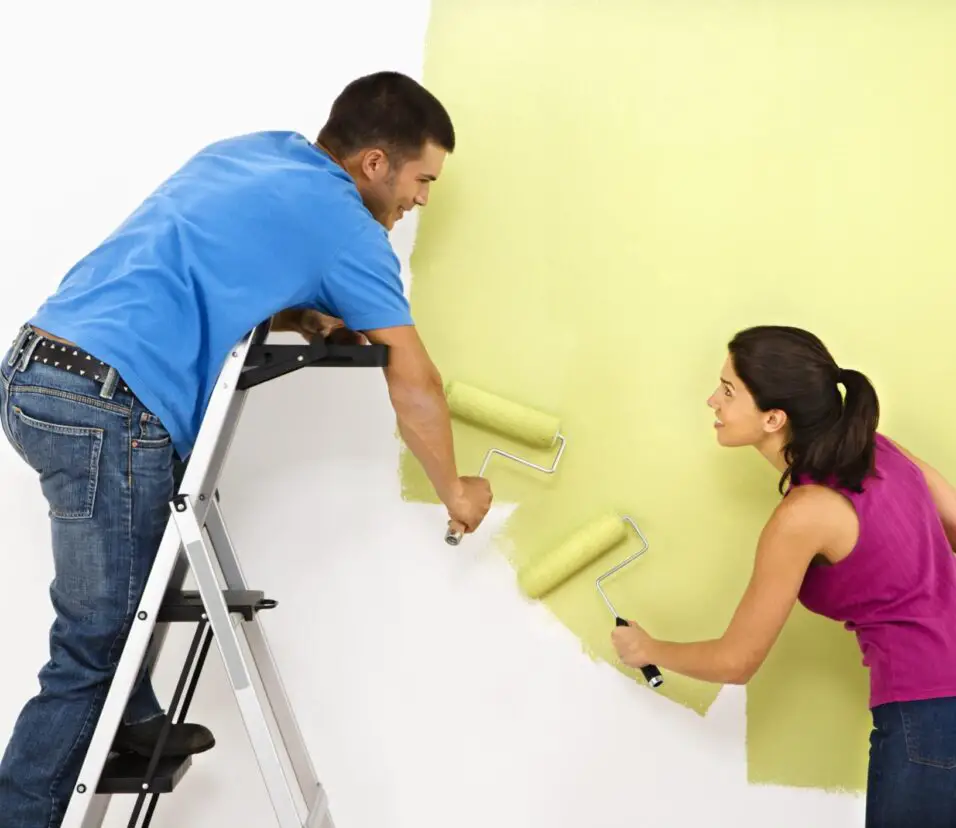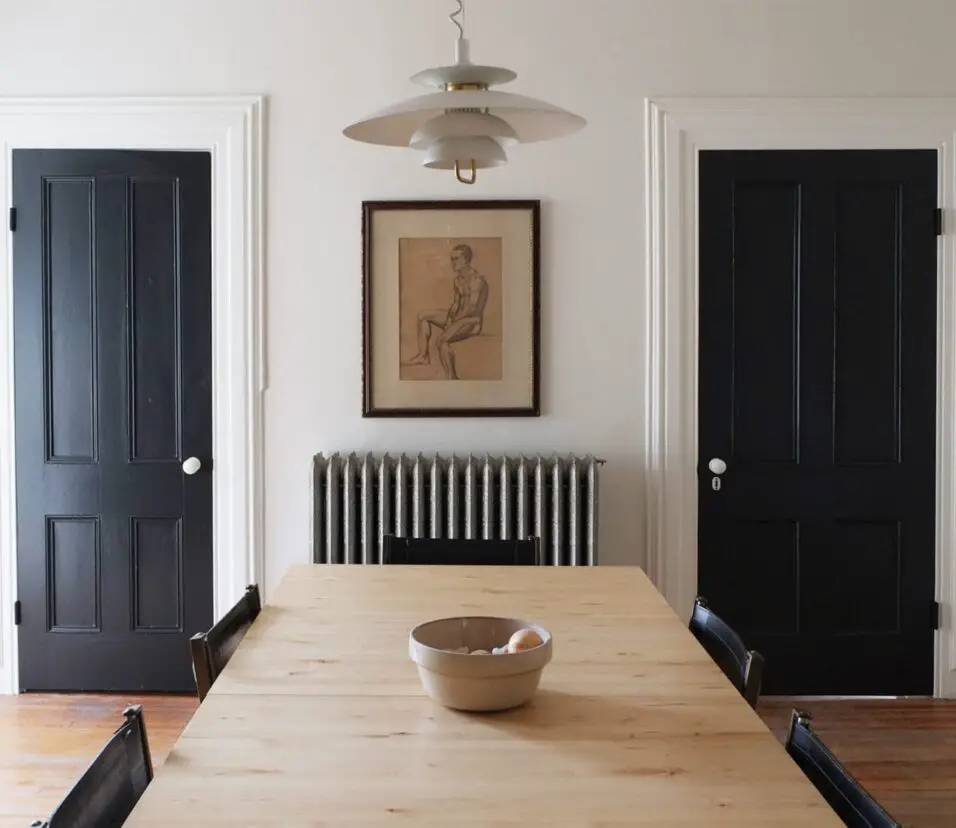How To Paint A Metal Door Interior
Introduction
How To Paint A Metal Door Interior: If you’re looking to revamp your interior space and add a touch of elegance, painting a metal door is a fantastic way to achieve just that. A metal door not only serves as a functional element but also contributes to the overall aesthetic of a room. Whether you’re aiming for a sleek modern look, a rustic industrial vibe, or a classic and timeless appeal, a fresh coat of paint can work wonders.
In this guide, we will take you through the step-by-step process of painting interior metal door to transform it from a simple utilitarian fixture to a stylish focal point. While painting might seem like a daunting task, especially when dealing with metal surfaces, fear not! With the right tools, materials, and a bit of patience, you can achieve professional-looking results without the need for expensive contractors.
We will delve into the essential preparatory steps, from cleaning and sanding the door to ensure optimal paint adhesion, to selecting the appropriate type of paint and finish that suits your interior decor vision. Our comprehensive instructions will cover everything you need to know, including priming, painting techniques, and proper drying and curing methods.
Whether you’re a seasoned DIY enthusiast or just starting to explore the world of home improvement, this guide will provide you with the confidence and know-how to tackle painting your metal interior door. Get ready to unleash your creativity and enhance your living space with a beautifully painted metal door that reflects your personal style. Let’s dive in and transform your space, one brushstroke at a time!
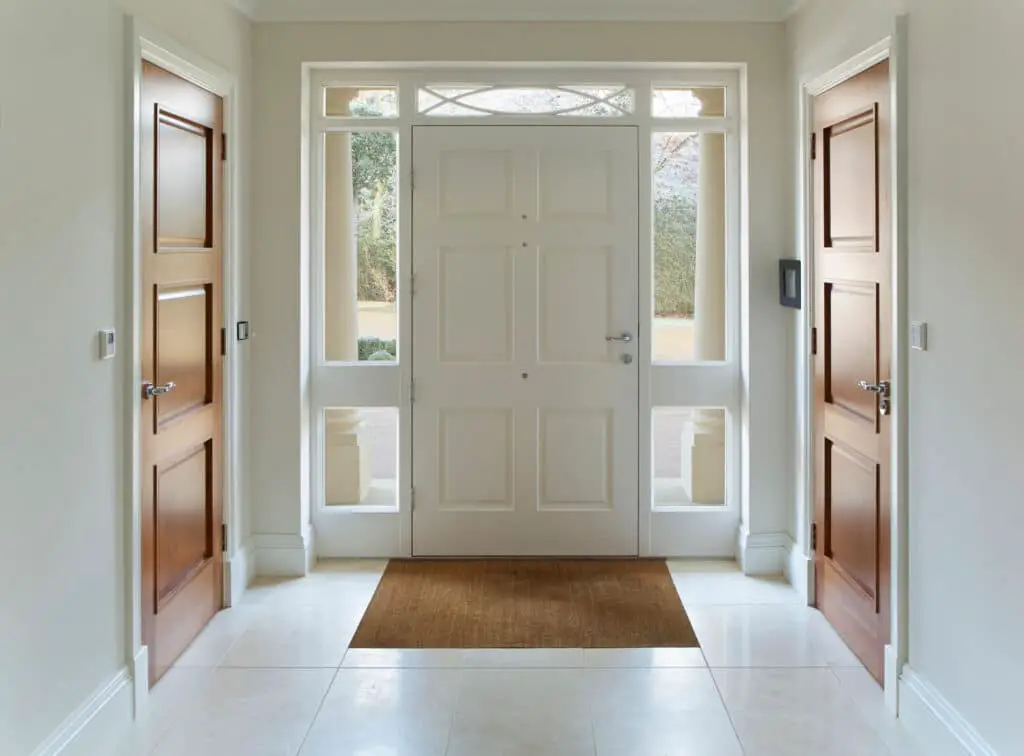
What kind of paint do you use on interior metal doors?
acrylic paints
Water-based acrylic paints (also known as latex paints) and oil-based paints (also called solvent-based paints), as well as the majority of high-quality paints, should perform well on metal with the proper application technique.
When painting interior metal doors, it’s essential to select the right type of paint to achieve a durable and attractive finish. Here are the steps and the type of paint you should use:
Type of Paint:
- Latex or Acrylic Paint: For interior metal doors, latex or acrylic-based paint is typically the best choice. These paints are easy to work with, have low odor, and dry relatively quickly. They also adhere well to metal surfaces and offer good durability.
Steps to Paint an Interior Metal Door:
- Preparation:
- Remove the door from its hinges, if possible. If not, make sure it’s securely propped open to access all areas.
- Clean the door thoroughly to remove dust, dirt, and any grease or grime. Use a mixture of mild detergent and water, rinse it well, and let it dry completely.
- Sand the surface lightly to create a slightly rough texture, which helps the paint adhere better. Remove any sanding dust.
- Priming:
- Apply a primer designed for metal surfaces. The primer promotes adhesion and provides a stable base for the paint. Choose a primer compatible with your selected latex or acrylic paint.
- Allow the primer to dry completely according to the manufacturer’s instructions.
- Painting:
- Stir the latex or acrylic paint thoroughly to ensure an even consistency.
- Use a high-quality paintbrush or a small roller designed for smooth surfaces.
- Apply the paint in thin, even coats, working in the direction of the grain (if the door has one) to achieve a uniform finish.
- Allow each coat to dry fully before applying the next. Multiple thin coats are preferable to one thick coat for a smoother result.
- Finishing:
- Once you’re satisfied with the coverage and finish, inspect the door for any missed spots or imperfections. Touch up as needed.
- Reinstall the door on its hinges, if it was removed.
- Curing:
- Latex or acrylic paints may feel dry to the touch quickly, but they require time to cure fully. Avoid heavy use and potential damage for a few days to allow the paint to harden completely.
By using the right type of paint and following these steps carefully, you can achieve a professional and durable finish when painting interior metal doors.
What kind of paint do you use on metal?
Types of Metal Paint
Metal paints come in oil-based and water-based brush-on or spray-can versions. Oil-based paint is trickier to work with, but the results are longer lasting. Water-based acrylic paints can be overall more forgiving but may be difficult to find in spray form for exterior use.
When painting metal, the type of paint you choose depends on the specific metal surface and its intended use. For general metal surfaces like doors, railings, or furniture, you can use either oil-based or latex-based paints. Oil-based paints are known for their durability and resistance to wear and tear, while latex-based paints are more environmentally friendly and have less odor. Be sure to use a primer suitable for metal surfaces to promote adhesion. Additionally, for exterior metal surfaces, consider using paints formulated for outdoor use to withstand the elements.
How do you paint a metal door without removing it?
How to Paint a Front Door Without Removing It
1: Remove the door handle, locks and other hardware.
2: Sand the Door.
3 : Clean the Door.
4: Tape off the hinges and windows.
5: Paint one coat of primer.
6: Paint 2 coats of exterior paint.
7: Reinstall the door handle and locks.
Painting a metal door without removing it can be done by following these steps:
a. Prepare the Door: Clean the door thoroughly to remove dirt, grease, and loose paint. Sand the surface lightly to create a rough texture for better paint adhesion.
b. Mask and Protect: Use masking tape and drop cloths to protect areas you don’t want to paint, like the doorknob, hinges, and surrounding walls.
c. Prime: Apply a metal primer designed for the type of paint you’re using. Allow it to dry according to the manufacturer’s instructions.
d. Paint: Apply the selected paint with a brush, roller, or sprayer, working in thin, even coats. Allow each coat to dry before applying the next one. Follow the paint manufacturer’s recommended drying times.
e. Finish: Once the final coat is dry, remove any masking, and ensure the door operates smoothly.
What is the best paint finish for a metal door?
Just as essential as your paint type and color is its finish. Satin or semi-gloss are both good choices for a steel front door, since in addition to having a nice sheen they won’t show nicks or scratches as easily as a flat or eggshell finish.
The best paint finish for a metal door depends on your preferences and the door’s location. For interior metal doors, a satin or semi-gloss finish is often recommended. These finishes are easy to clean and offer some sheen, which can enhance the appearance of the door. For exterior metal doors, a semi-gloss or gloss finish is a good choice as it provides better protection against the elements and is more resistant to moisture and dirt.
Can you paint directly on metal?
As a starting point, you need to use paint specifically formulated for metal surfaces. This might be labeled as multi-surface paint or metal paint. If you don’t use this paint, it will peel, blister or flake, completely ruining your finish.
While you can paint directly on metal, it’s highly recommended to use a metal primer first. Primers designed for metal surfaces improve paint adhesion, prevent rust or corrosion, and ensure a smoother, more durable finish. Applying paint directly to metal may result in poor adhesion, reduced durability, and a less professional-looking result.
What is the best method for painting metal?
Coat either type of metal with a rust-inhibiting primer and make sure it’s formulated for use on metal (same goes for your paint choice, too). Use a brush or a roller to paint, depending on the shape of the piece. Let the paint dry in between coats.
The best method for painting metal involves proper surface preparation, the use of suitable paint and primer, and attention to detail. Here’s a general guideline:
Surface Preparation: Clean, sand, and, if needed, remove any rust or old paint. Ensure the surface is smooth and free of debris.
Primer: Apply a metal primer designed for your chosen paint type (oil-based or latex) and allow it to dry thoroughly.
Painting: Use a brush, roller, or sprayer to apply the paint in thin, even coats. Follow the manufacturer’s recommendations for drying times and the number of coats required.
Finish: Allow the final coat to dry completely before reassembling or using the painted metal item.
Can you paint a metal door without primer?
Or you can use direct-to-metal (DTM) paint. DTM paint can stick to metal without priming. Interior metal door: For interior metal door surfaces, or the interior surface of your metal front door, you can use top-quality acrylic latex interior paint with good blocking resistance.
While it’s technically possible to paint a metal door without using a primer, it’s generally not recommended if you want to achieve the best results and ensure the longevity of your paint job. Primer serves several important purposes when painting metal surfaces:
Improved Adhesion: Metal surfaces can be smooth and non-porous, which makes it difficult for paint to adhere properly. Primer creates a surface that paint can grip onto effectively, leading to better adhesion and a more durable finish.
Corrosion Protection: Primer helps protect the metal from rust and corrosion by providing a barrier between the metal and the elements. This is especially important if the door is exposed to moisture or varying weather conditions.
Even Finish: Primer can help even out the surface texture of the metal, ensuring that the paint goes on smoothly and doesn’t appear blotchy or uneven.
Coverage: Primer can help improve the coverage of the paint, requiring fewer coats to achieve the desired color and finish.
Color Accuracy: Using a primer can help the final paint color appear truer to its intended shade, as it won’t be affected by the underlying metal color.
Skipping the primer might lead to issues such as poor adhesion, uneven paint coverage, and a shorter lifespan for your paint job. In the long run, investing the time and effort to properly prime the metal surface before painting will likely result in a more satisfactory and durable outcome.
Can you brush paint a metal door?
Use a Brush on The Boxes
I used a paint brush and got into the nooks and crannies of the door panels. I always recommend multiple light coats instead of one heavy coat. Trust me, the end result will be much better that way!
Yes, you can brush paint a metal door, and it is a commonly used method for painting metal surfaces. Brush painting allows for precision and control, making it a suitable choice for smaller metal surfaces like doors.
Here are the steps to brush paint a metal door effectively:
- Preparation: Start by preparing the metal door. Clean it thoroughly to remove dirt, dust, grease, and any loose or peeling paint. Use a mixture of water and mild detergent for cleaning, and rinse it well. Let the door dry completely before proceeding.
- Sand the Surface: To create a slightly rough texture for better paint adhesion, lightly sand the surface of the door. Use fine-grit sandpaper, and be sure to remove any sanding dust afterward.
- Priming: Apply a metal primer that is compatible with the type of paint you plan to use. The primer will help the paint adhere better and provide a more even finish. Allow the primer to dry according to the manufacturer’s instructions.
- Painting: Stir the paint thoroughly to ensure an even consistency. Dip your high-quality paintbrush into the paint, removing excess paint on the rim of the container. Begin painting the metal door using smooth, even strokes in the direction of the grain (if applicable). Avoid overloading the brush to prevent drips and uneven coverage. Allow each coat to dry completely before applying the next.
- Multiple Coats: Depending on the color and coverage you desire, you may need to apply multiple coats of paint. It’s better to use several thin coats rather than one thick coat to achieve a smoother and more professional finish. Be patient and allow each coat to dry completely before proceeding.
- Finishing Touches: Once you’re satisfied with the coverage and finish, inspect the door for any missed spots or imperfections. Touch up as needed. Remove any masking tape and protect the freshly painted door from dust or debris until it is fully dry and cured.
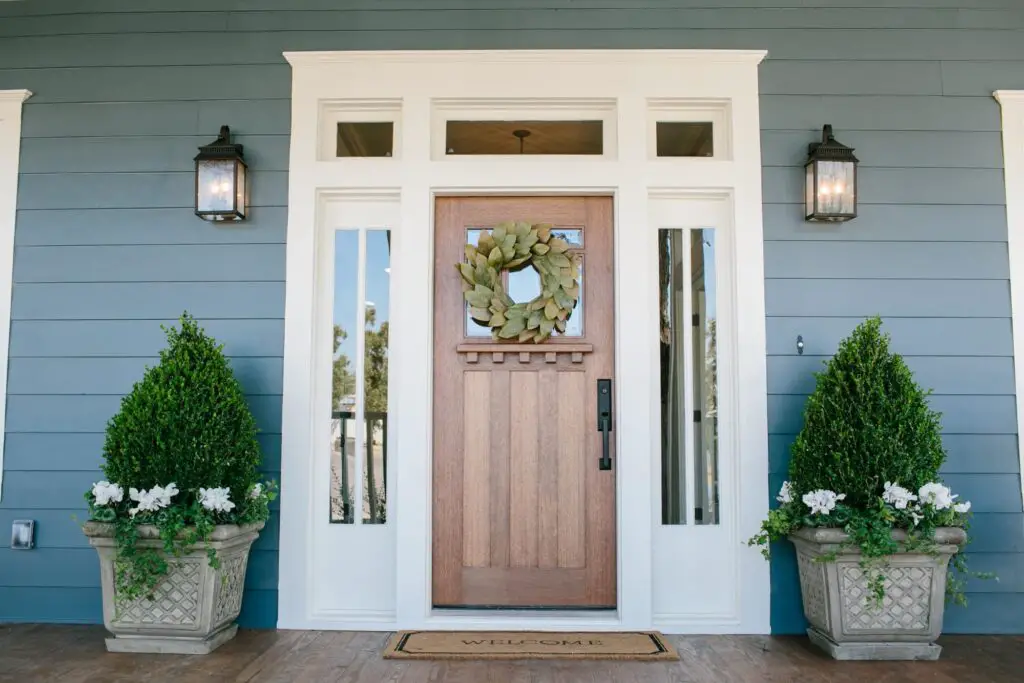
Conclusion
As you stand back and admire your newly painted metal door, you’ll realize that the effort you’ve invested was well worth it. With a fresh coat of paint, your interior metal door has undergone a remarkable transformation, becoming a seamless part of your overall decor vision. This DIY project not only enhances the aesthetics of your space but also empowers you with newfound skills and confidence in tackling home improvement tasks.
Remember, the key to a successful paint job lies in the preparation and attention to detail. By following the steps outlined in this guide, you’ve learned the importance of proper cleaning, priming, painting techniques, and patience during the drying process. Your commitment to this process has resulted in a door that not only looks stunning but also boasts longevity and durability.
Whether you chose a bold, eye-catching color or a subtle, timeless shade, your painted metal front door adds character and charm to your interior. The sense of accomplishment and satisfaction you’ve gained from this endeavor serves as a reminder that with a little guidance and determination, you can achieve remarkable transformations within your living space. So go ahead, revel in your newly painted door, and let this project inspire you to take on even more exciting DIY ventures in the future.



